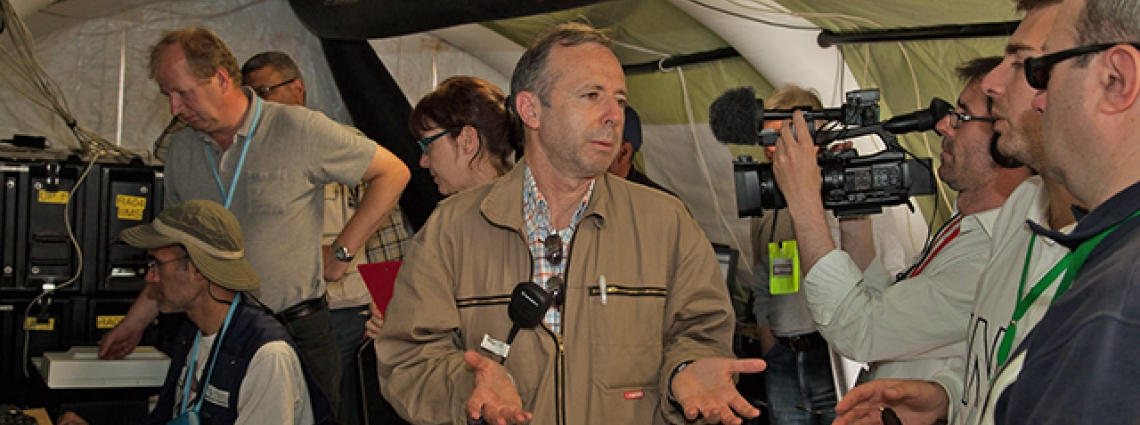Flexing the Verification Muscle
The logistics were impressive, the timeframe tight, the conditions tough.
From 26 May to 7 June 2013, nearly 150 experts from 40 countries set up shop on a military training ground near Veszprém, Hungary, for a simulated search for evidence of a nuclear explosion. Fifteen trucks transported 120 tons of state-of-the-art equipment from the CTBTO’s Vienna storage facility to the site, where a fully functioning base of operations was established. Welcome to the world of on-site inspections (OSI).
An OSI, a Treaty-specified search of the suspect area to determine if a nuclear explosion has been conducted, is the final verification measure under the Comprehensive Nuclear-Test-Ban Treaty (CTBT). An inspection may only be invoked once the Treaty has entered into force. In readiness for that day, the CTBTO conducts regular simulations and training exercises to fine-tune its procedures and techniques.
In every aspect, the exercise was a success.
“We had a number of goals for the exercise and activities that needed to be tested prior to the large field exercise in Jordan next year,” says Exercise Director Gordon MacLeod. “And in every aspect the exercise was a success. We met all our goals, utilized the technical equipment, collected and processed environmental samples and data collected by integrated field teams from the inspection area.”
Recreating the kind of conditions that an OSI might encounter is essential if an exercise is to be meaningful. In this scenario, the Executive Council of the CTBTO voted in favour of an OSI following a request by the fictional state of Equilibria that neighbouring Forestia had conducted a nuclear explosion in contravention of the CTBT. An inspection team was despatched to Forestia within days to carry out the all-important ground search.
It was gratifying to see the products of lessons learned and the OSI Action Plans being utilized.
Practice makes perfect
The exercise in Hungary, called Build-Up Exercise III, was the last in a cycle of exercises dating back to April 2012, which have rehearsed and tested the four phases of an OSI: Launch, Pre-Inspection, Inspection and Post-Inspection. Build-Up Exercise III focused on an Inspection phase, in which the inspection team tested OSI techniques, procedures, search methodology, as well as their integration at the operational level.
“The Inspection Team Functionality concept, our search methodology, provided a solid framework for planning, reporting and executing our field missions,” says Inspection Team Leader Alex Lampalzer.
The exercise also drilled the inspection team’s ability to tread the fine line between conducting a thorough inspection whilst fully adhering to the provisions of the Treaty and with due consideration of the legitimate concerns and security interests of the Inspected State Party, Forestia. In this, team members playing representatives of Forestia did their best to ensure the exercise was as realistic as possible. Similarly, simulated interaction with the media helped the team establish communications strategies for real OSIs.
The Inspection Team Functionality concept, our search methodology, provided a solid framework.
“We executed the communications and information management structure in the field, as planned,” says Macleod. “It was very gratifying to see the products of lessons learned and the OSI Action Plans being utilized.”
With the experience and knowledge gained from exercises such as these, the CTBTO is now looking ahead to its second fully-integrated field exercise (IFE14) in Jordan in 2014 – a major collaboration of international experts and scientists, which will test the vast majority of OSI activities and techniques.
2 Jul 2013
